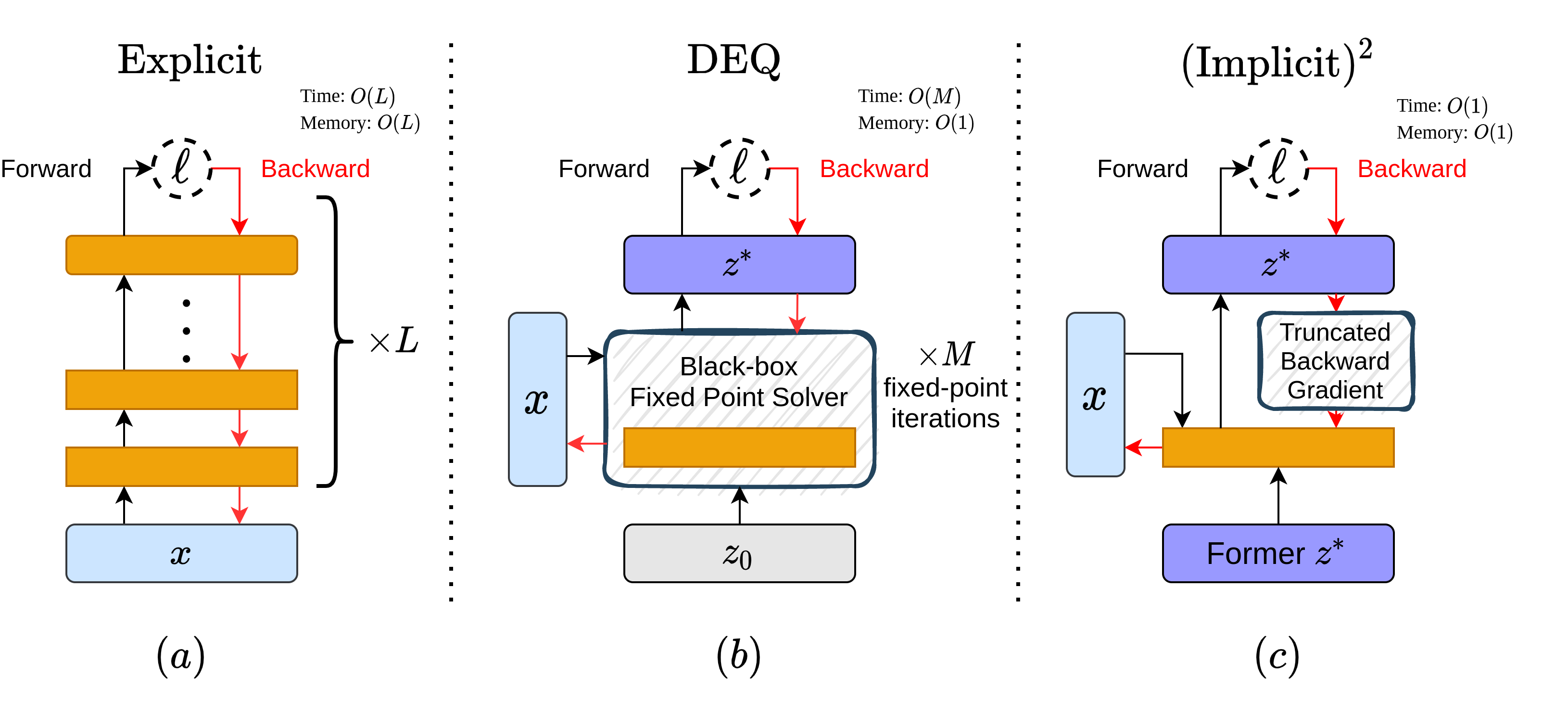This repo contains the implementation of the (Implicit)2 network, an implicit neural representation (INR) learning framework backboned by Deep Equilibrium Model (DEQ). By taking advantage of the full-batch training scheme commonly applied to INR learning on low-dimensional data (e.g. images and audios) as well as an approximated gradient, (Implicit)2 networks operate on significantly less computation and memory budget than exisiting explicit models while perform competitively.
For more info and implementation details, please refer to our paper.
Data used in this project is publicly available on Google Drive (link).
To replicate our experiments, create a data folder under the root directory and download the correponding datasets.
📦data
┣ 📂image
┃ ┣ 📜celeba_128_tiny.npy
┃ ┣ 📜data_2d_text.npz
┃ ┗ 📜data_div2k.npz
┣ 📂3d_occupancy
┣ 📂audio
┣ 📂sdf
┗ 📂video
To reproduce results on image representation and image generalization, run
python scripts/train_2d_image.py --config_file ./configs/<task>/config_<task>_<dataset>.yaml
For other experiments (audio, video, and 3d_occupancy), run
python scripts/train_<task>.py --config_file ./configs/<task>/<model>.yaml --dataset <dataset>
Below is a list of available dataset options for each task (including some extra data we did not cover in the paper)
audio: ['bach', 'counting']
video: ['cat', 'bikes']
3d_occupancy: ['dragon', 'buddha', 'bunny', 'armadillo', 'lucy']
- The set of experiments on image, video, and audio signals and the corresponding data largely follows SIREN and Fourier Feature Networks.
- Models for the 3D occupancy experiments are directly retrieved from the Stanford 3D Scanning Repository
@inproceedings{huang2021impsq,
author = {Zhichun Huang and Shaojie Bai and J. Zico Kolter},
title = {(Implicit)^2: Implicit Layers for Implicit Representations},
booktitle = {Advances in Neural Information Processing Systems (NeurIPS)},
year = {2021},
}
